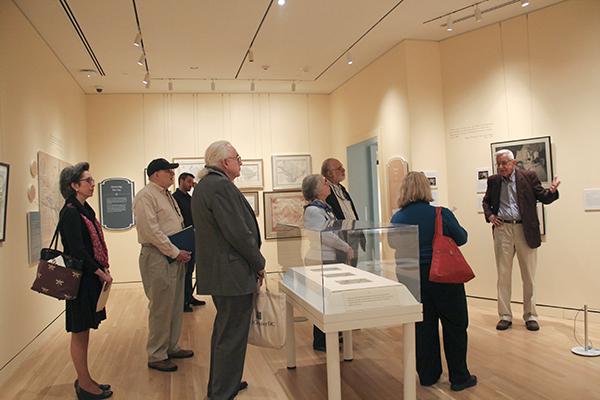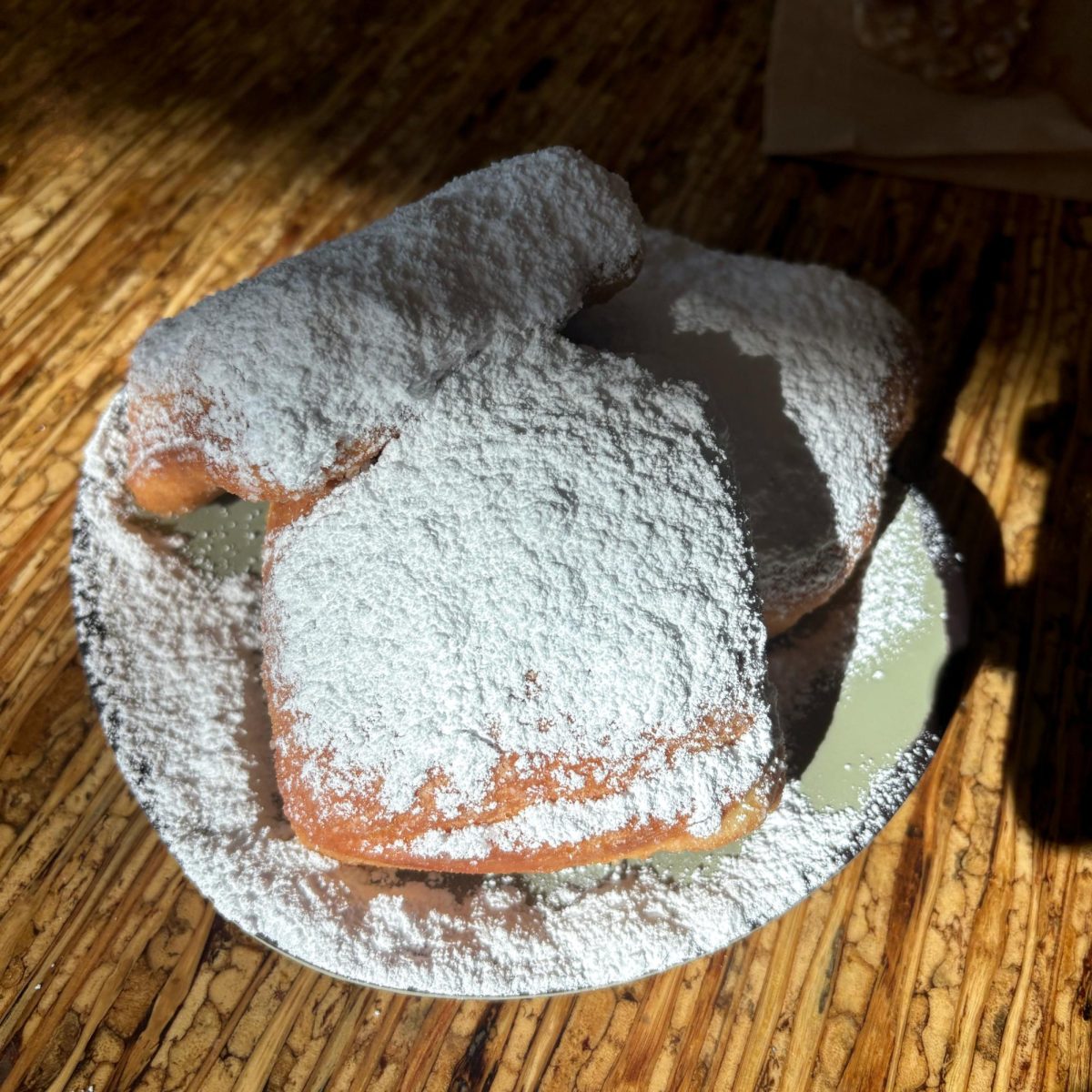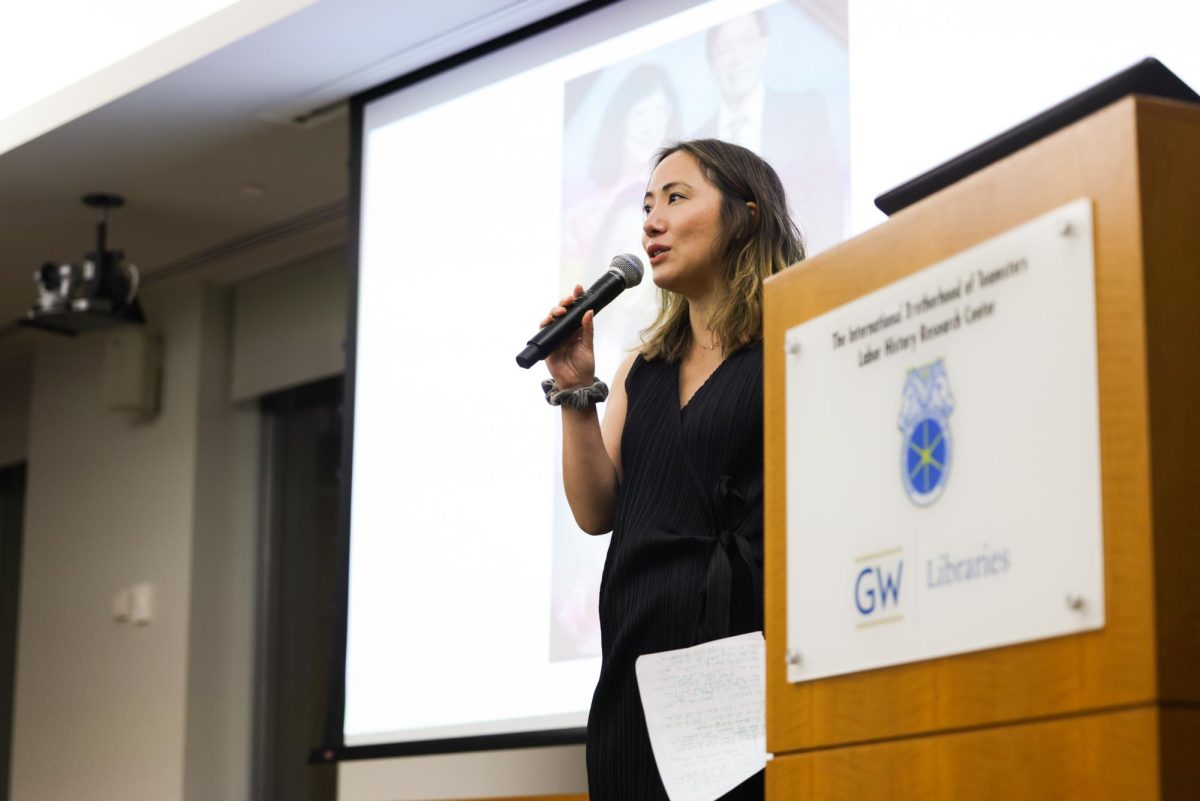Updated: March 23, 2015 at 4:53 p.m.
A museum full of 5,000-year-old rugs may not be the first place that comes to mind as an ideal location for a student hub, but the University is hoping to convince you otherwise.
Last week, GW faculty and alumni made the case that the museum, which will be free for students, will not only serve as home to artifacts like ancient Egyptian mummy wraps and imperial cushions from 19th-century China, but also as as an interactive classroom and gathering place for students.
The director of the Textile Museum, John Wetenhall, said it would host about 200 cultural programs every year – many of which will be organized by students and faculty, and will vary from lectures on different aspects of textile arts to interactive workshops for felt-making.
The next Wednesday you find yourself with some free time for lunch, you may consider taking your Sweetgreen to-go and heading to the George Hewitt Myers Room to try one of its weekly, 20-minute programs, like a lecture on Buddhist identity or a Q&A with a gallery curator while you eat.
“It’s a real priority to make this an active engagement of the whole student body, a place that people will enjoy coming to,” Wetenhall said.
Students can reserve the room on the museum’s first floor on the Center for Student Engagement website. The museum will be open Monday, Wednesday, Thursday and Friday from 11:30 a.m. to 6:30 p.m., Saturday from 10 a.m. to 5 p.m., and Sunday from 1 to 5 p.m.
The museum will also serve as hands-on classroom for graduate students. One student in GW’s graduate exhibit design certificate program, Warren Lewis, interned at the museum during construction.
“When you walk through the Woodhull House and Albert Small gallery, I did all the lighting. I cut each screen, I put each lens in and I hung each fixture,” he said. “It’s been a great process, a great learning process to actually have a better understanding of how lighting works.”
Adriane Roberts, a graduate student in the Columbian College of Arts and Sciences’ museum studies program, said her work with the Textile Museum helped her land a job.
“The construction drawings from the Textile Museum project was what I showed employers,” she said. “It’s pretty much direct one-to-one – this is what we’re going to be showing employers when we get out of school.”
Students can also serve as guides, giving 10-minute tours of museum highlights to visitors. Of the eight student tour guides working now, seven are undergraduate students who come from disciplines like anthropology and public health.
The Textile Museum will display its collection in the new 46,000-square-foot, four-story building while the GW Museum’s collection of D.C. artifacts will be housed in the newly renovated historic Woodhull House, a two-story brick mansion that was donated to the University in 1921. A second-floor walkway connects the two buildings.

GW joined forces with the Textile Museum in 2011 to move the museum’s collection of 19,000 textiles from S Street to Foggy Bottom. The museums will combine operations under one roof, but will remain separate legal entities.
The museum cost $33 million dollars and took three years to build.
Three exhibits were on display for the LEED Gold-certified complex’s opening on Saturday: two from the Albert H. Small Washingtoniana collection, which showcases artifacts from D.C., and one from the Textile Museum, which shows how textiles have been used over the course of history to signify political status and other aspects of identity.
The Textile Museum exhibit will stay open through August, and the Washingtoniana exhibits will stay open through October. A new exhibit showcasing photos from 19th-century China along with textiles from the Qing Dynasty will open in September and run through February.
The Textile Museum’s “Unraveling Identity” exhibit spans three floors. On the basement floor, the pieces focus on aspects of political identity. It features items like a cotton spinning wheel from 1930s India, which Mahatma Gandhi turned into a symbol of resistance.
It also features an interactive display where visitors can have their photos taken and shared on a touch screen along with three descriptors of identity – such as race, religion or occupation – that they choose to highlight in their clothing.
The second floor’s theme is cultural identity, with one eye-catching display featuring a mannequin walking a tightrope in a Victorian-style gown that’s rendered in vivid West African prints to symbolize the struggle of balancing two distinct cultural identities.
The third floor’s textiles symbolize religious identity and include items like ancient Muslim prayer rugs and an intricately-embroidered gold Daoist priest robe from early 19th-century China.
University President Steven Knapp said at a press event last week that students from all disciplines will have a chance to explore the museum through their classes.
“With the Textile Museum, you’ve got materials from five continents. If you’re interested in Middle Eastern studies, Africana studies, central Asian studies, pre-Columbian America, there are a whole range of different disciplines,” he said.
Knapp said he hopes varying courses will serve as an entry point for students to learn more about the museum.
“I’m imagining students who come here because the American history thing, but then suddenly they’ve never seen a spectacular Persian carpet before. And all of a sudden they see that and realize this stuff is really interesting, and it’s an interesting symbol of a culture that they may be totally unfamiliar with,” he said.
So the next time you have a free afternoon, you can check out the contents of this elegantly designed building, though you may have wondered about its purpose until now. You may even find yourself captivated by a spectacular Persian rug.
This post was updated to reflect the following corrections:
The Hatchet incorrectly reported that GW’s graduate exhibit design certificate program was housed in the Corcoran School of the Arts and Design. It is actually a part of the museum studies program in the Columbian College of Arts and Sciences. The Hatchet incorrectly reported that the museum building has three stories. It has four. The Hatchet also incorrectly reported that GW purchased Woodhull House in 1912. It was actually donated to GW in 1921. Finally, the post was updated to reflect the museum’s correct hours of operation. We regret these errors.






